#mori kei lifestyle
Text

4 notes
·
View notes
Text




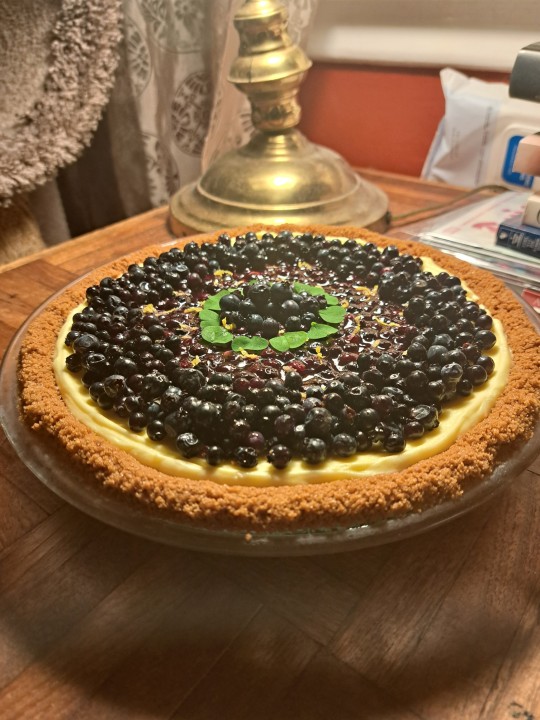

Wild foraged Black Balsam Blueberry Tart with Wood Sorrel & Sourwood honey:
Biscoff crumb crust
Vanilla créme patissierre
Wild blueberry glaze
Wild blueberries
Lemon Zest
Wood Sorrel Leaves
Sourwood Honey
This took me 3 days to make and I'm so proud of it 🥲
#mori#mori girl life#mori girl#appalachian yama mori#forest girl#mori lifestyle#mori kei#nature#personal#appalachia#cooking#tart#blueberry#foraging#wild food#creme patissierre#food porn
19 notes
·
View notes
Text
I started a blog! It’s going to be focused on a variety of my hobbies including crafting and Japanese fashion and also some other lifestyle related things as well. I’m really excited to have a place where I can talk a bit more about the things that I love and would be so happy if others with similar interests would take a look too! 🤍
#kawaii fashion#eglcommunity#egl fashion#egl lifestyle#kawaii#jfashion#diy#crafts#sewing#mori kei#kawaii aesthetic#pastel fashion#lifestyle#home decor
6 notes
·
View notes
Text

#giftideas#cottagecore#cottagecore lifestyle#boho bag#hand embroidered bag#cottage aesthetic#cottagecore bag#bohemian bag#cottage chic#mori kei#mori kei bag#boho#gift for women#hand crafted bag#handmade bag#linen bag#shabby chic#animal embroidered bag#bohemian clothing#organic linen#animal embroidery
5 notes
·
View notes
Text
Mori Kei -
What is its current status as a style/subculture/etc.? We used to dress so cute! I really miss those days.
Can anyone update me on the status of the subculture and if anyone is doing it still, and what new developments there have been/what’s happening with it in Japan?
3 notes
·
View notes
Text

GUIDE TO MORI KEI!! 森系
mori kei is one of the many early 2000s subcultures that originated from the harajuku district inspired by living in the woods.
wearers of this type of clothing are usually referred to as mori girl (森ガール) or mori boy (森ボーイ). basically, forest girl/boy.
this subculture is based on nature and gives off a more elven/fae feel, its main color pallet consisting of earth tones, greens, whites, and other soft colors. plaid is a pattern that occasionally appears in mori kei fits, and sometimes baby blues and pinks will appear for a contrast to an outfit.
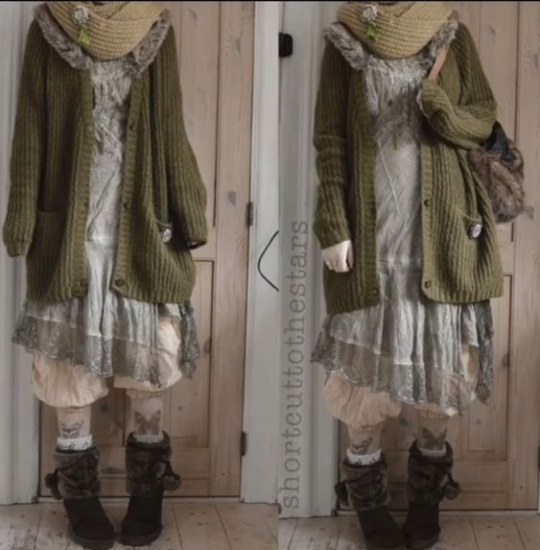


if you want to look for some clothing that would fit with this aesthetic, look for something loose and natural, and pieces that layer well together. such as a large cardigan/sweater vest that goes well with a frilly dress/skirt and leg warmers and tights. pants may also be used for a more masculine look.
"ゆるふわ" is what the loose layers achieve, hiding the curves of the body and therefore the wearer has a "fluffy" appearance. when layering, make sure to begin with the lightest/thinest layer first, and then move on to heavier materials.
lace, light materials, and embroidered clothes are musts, while accessories such as shawls, tights, and scarfs add to the layered effect.
linen, wool, and cotton are fabrics that are often used. fabrics that drape nicely will be your bff when creating a mori kei outfit.
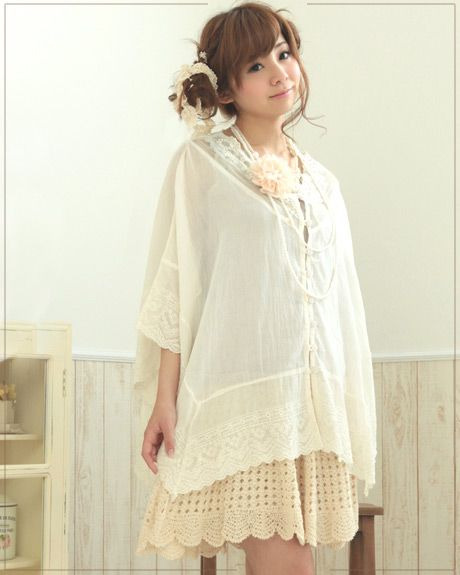

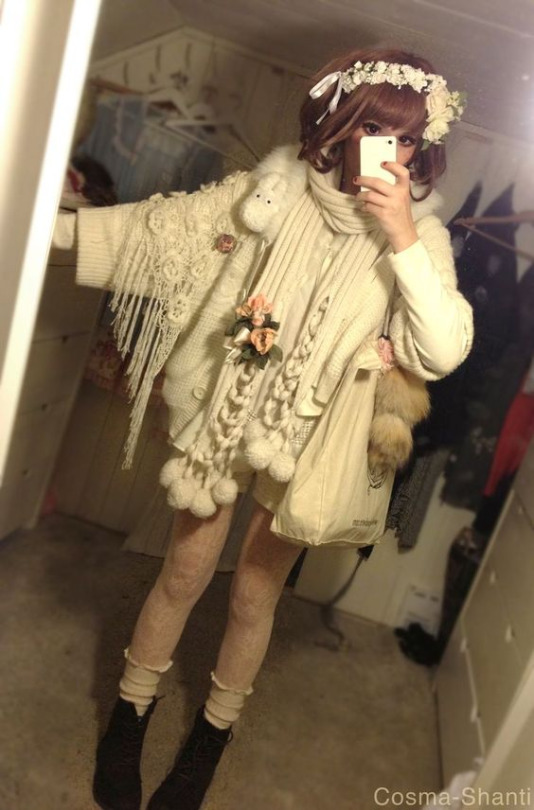
mori kei is actually quite similar to cottagecore, but while cottagecore is focused on a rural life, mori kei is more based on forests and nature itself.
It also expresses a love of the forest, quiet hobbies, reading, drinking tea, herbalism, and a natural lifestyle.
hair and makeup often match with the almost whimsical and natural look of the outfits. makeup is kept relatively basic, with use of colors such as beige, pinks, and golds. minimalistic igari makeup is a nice example.




DARK MORI KEI/MORI GOTH
a subcategory of mori kei is mori goth, which uses darker, less saturated colors of the usually light color scheme of mori kei. it still follows the same layering scheme and relaxed silhouette, but as of now it has separated into strega, another subculture.
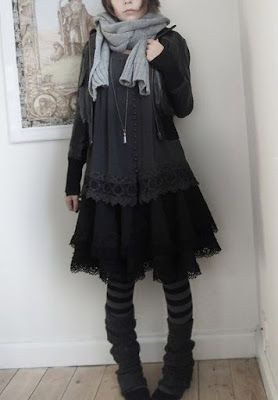
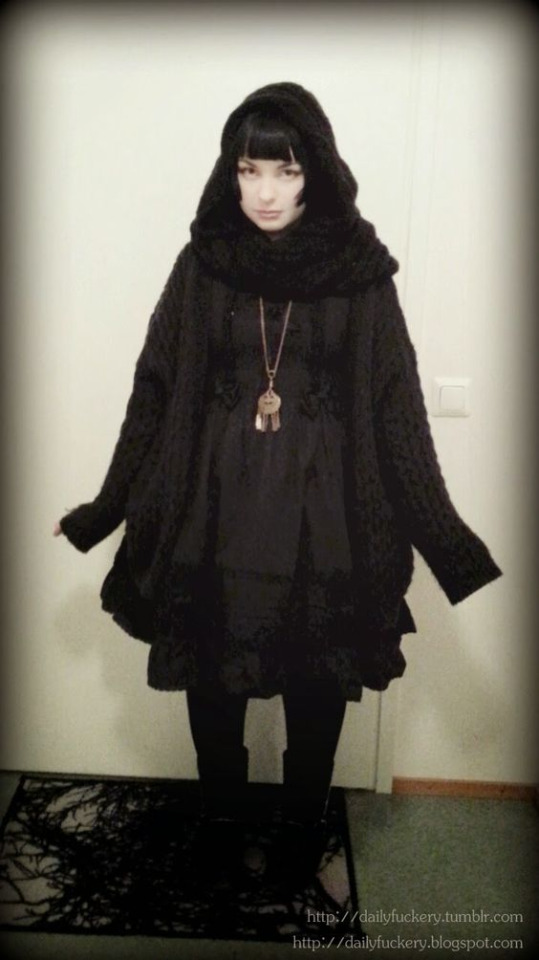

YAMA KEI
a more practical subcategory, usually for fans of the outdoors who love hiking/camping. this includes brighter and more vivid colors while also reverting to more practical clothes.
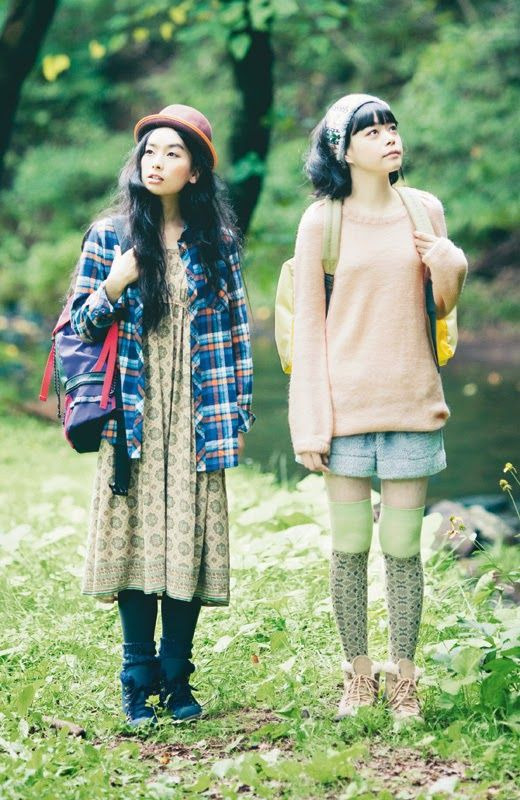

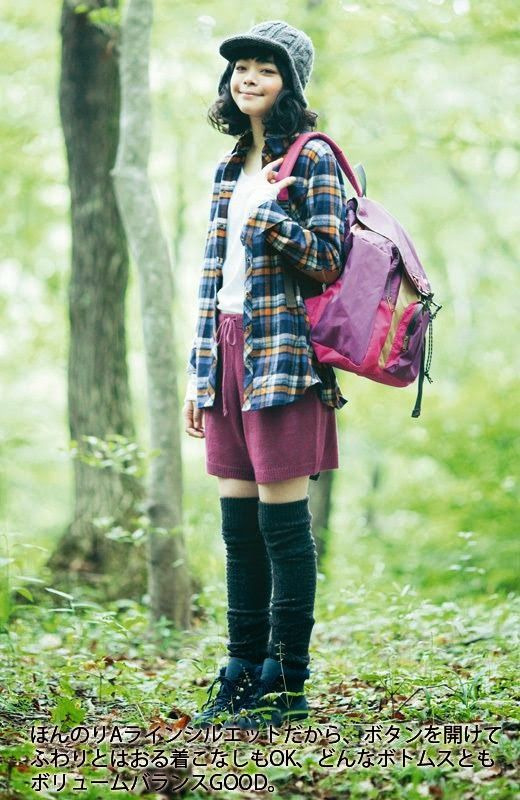
HAMA KEI
hama kei is a beach-based section, with uses of lighter clothing and less layers, as well as blues and yellows. you'd also see things such as stripes, anchors, and denim to add to the sailor-like outfits


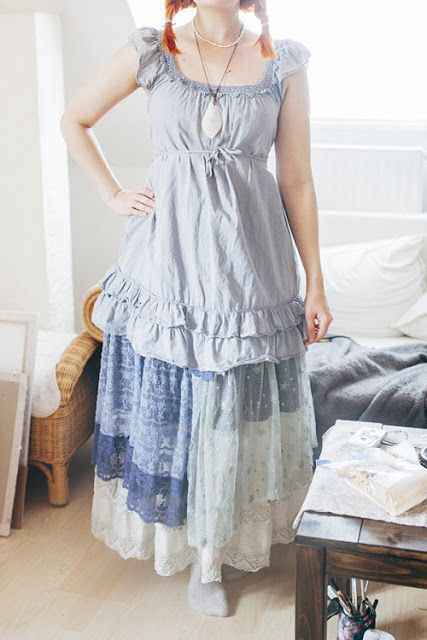

#kogyaliesguides (*/ω\*)!#guidetomorikei#morikei#mori kei#harajuku#harajuku fashion#jfashion#aesthetic#fashion aesthetic#fashion guide#cottagecore#corvidcore#goblincore#outfit#yama kei#hama kei#mori girl#mori boy#mori goth#dark mori#dark mori kei#cottagecore outfit#forest#trees#woods#forest aesthetic#naturecore#forestcore#fashion#alternative
217 notes
·
View notes
Text
This weeks harajuku fashion style is Mori kei!!!
History of mori kei:
Mori girl was founded by a woman named choco on mixi (japanese facebook) in 2006 but this particular style has existed even before its recognision, choco just gave that style a name. Mori stands for forest in japanese and it translates to forest girl. There were several rules created for mori girl, which even the ogs of that style didnt follow completly. In 2012 mori girl was renamed to be mori kei to be more inclusive of its sub-styles
Rise to popularity
After the mori girl mixi group was created, many people started to participate in that style and street photographers began to feature them more often in their magazines. There were also several magazines and issues completly dedicated to mori kei such as: spoon, mori girl lesson and fudge. There was also music created that was inspired by the mori girl style and an anime named honey and clover which features the main character wearing this style.
In 2013-2014 most mori style stores have shutdown because of its decrease in popularity over the years and popular mori kei personalities have deactivated their blogs. Mori kei is still alive but its not as popular as it was before.
Brands
Mori kei never seriously relied on brand clothing, but there are still some brands that make/made mori kei styled clothing and this includes:
•Wonder rocket-was the most recognisible Mori brand and opened in 2007 and shutdown after ten years.
•DearLi- a chinese company that has been and is known for its past mori fashion lines
•Q-pot accessoires
•Earth,music & ecology
•Birkenstock
and many more which you can find on:
https://idontknowmuchbutimlearning.blogspot.com/2017/09/an-introduction-to-mori-kei.html?m=1
Fashion rules
•Natural fabrics: such as cotton and lace
•Natural colors: creams, browns, white, natural greens, light blues and light pinks
•Natural/ nature inspired patterns: flower patterns, nature patterns or even small stripes
•Layers: asymetrical layers, multiple dresses and/ or skirts. For a boyish silhouette: baggy pants, many shirts, scarves and sweaters
•Natural hair
•Minimal or no makeup
•nature themed accessoires: mushroom necklaces, flower crowns and etc.
•practical shoes
Substyles
•Dark mori: less popular, darker colorscheme, often confused with the western style Strega.
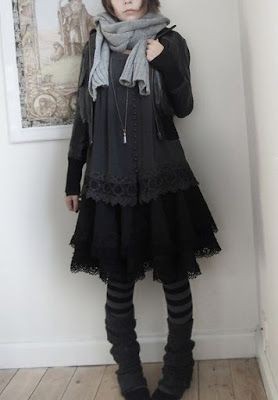
•Mori boy: masculine appereance, focuses less on light, airy and feminine materials such as lace. Features darker colorschemes.

•Hama kei: (ocean style)

•Yama kei (mountain style)

•Mori gyaru

•Practical mori
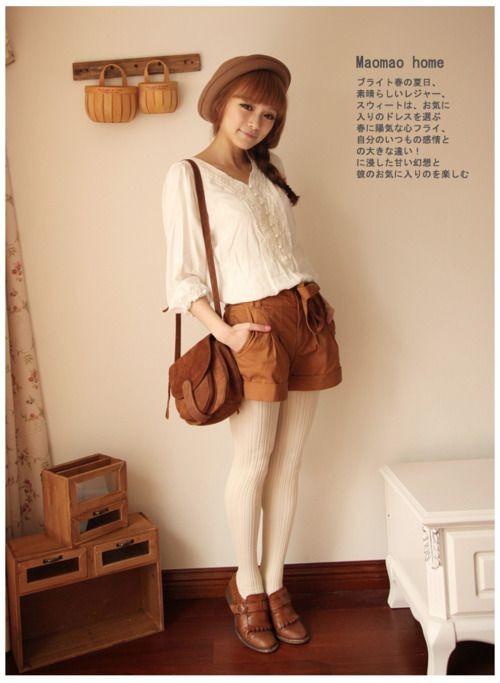
•Over the top mori
•Trendy mori (also known as street mori)
•Simplistic mori
•Bohemian mori
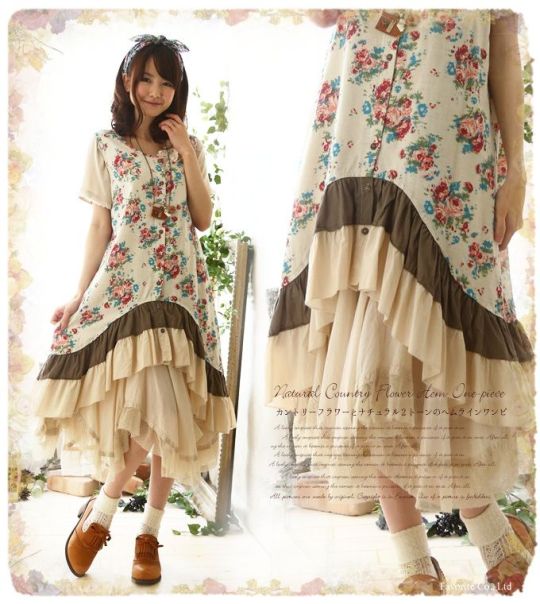
•Shabby chick mori
•Dolly mori
•Cult party mori

•Lolita mori
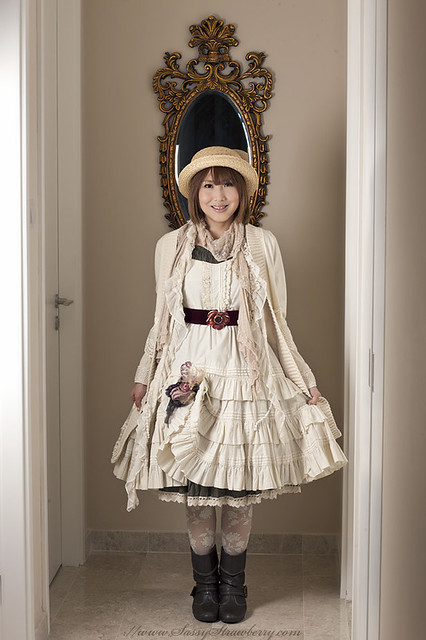
•Romantic mori
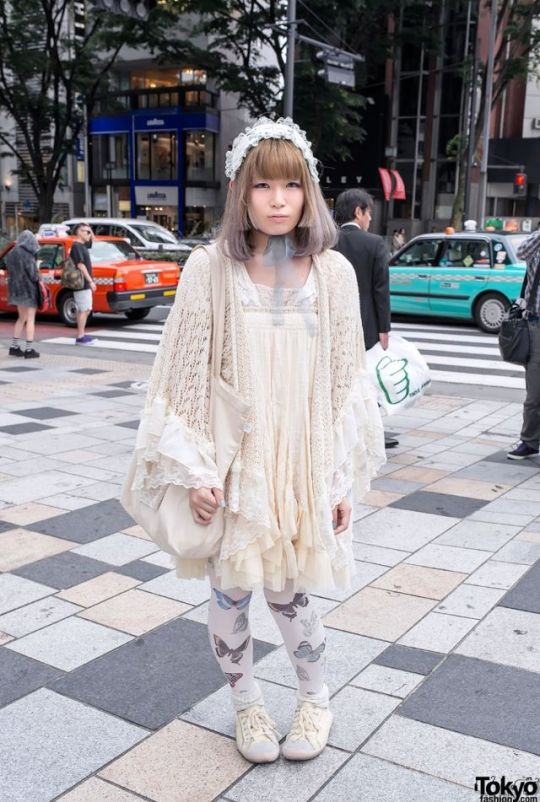
Lifestyle
Mori kei doesnt really have a lifestyle to follow but I recommend checking this mori kei blog which gives you an idea of a mori kei lifestyle: https://idontknowmuchbutimlearning.blogspot.com/p/navigation.html?m=1
Credits for the information
•Idontknowmuchbutimlearning.blogspot.com
•japanese fashion wiki
Photos: pinterest
#harajuku fashion blog#harajuku fashion#harajuku#harajuku style#mori kei#mori girl#mori style#japanese fashion#alternative fashion#fashion history#fashion blog#fashion#fashion inspiration#fypage#tumblr fyp#fyp#fypシ
195 notes
·
View notes
Note
There was a Mori Kei interview by a prominent Decora YouTuber awhile ago and one of the people on there really miffed me off because she spread a lot of misinfo about Mori, couldn’t actually answer many questions, and did the one massive mori faux par and conflated Mori kei and Cottagecore.
She didn’t know about any of the lifestyle elements of Mori, seemed honestly surprised to see Choco’s book, and honestly most of her looks were natural kei.
Anyway, so I go to check her insta out and she’s not even in the fashion anymore! She was here for like a year, gave a shit interview, and dipped! Said she was under too much pressure to create mori resources when she had little grasp of the fashion.
Please, if you’re new to a subcul, learn as much history as you can, don’t speak with such definitiveness on things you don’t know! It’s okay to be learning!
I know it’s shitty to bitch and moan about someone I don’t know anonymously, and this wouldn’t have happened if mori wasn’t dying, but misinfo in such small communities is dangerous. We are very small, so misinfo can spread easily.
The only good thing about mori being so small is that you’re guaranteed to find a blog that actually knows what they’re talking about if you just google a bit, and the tags aren’t as abused as some other jfashions.
.
20 notes
·
View notes
Photo

[alt text for readers: titled Japanese Fashion Spectrum (effort versus accrual). Left side states lifestyle (gyaru, hime gyaru, agejo) with a picture of a hime gyaru model, captioned "the most effort; hair, makeup, nails or skin upkeep. The center states "vibes" (jirai kei, larme, mori kei, any trend on tiktok probably, western styles - cottagecore, etc) with a picture of a larme kei model, captioned "amount of effort and clothes vary as long as the vibe is recognizable and complete". The right side states wardrobe (lolita, historical styles) with a picture of a lolita model wearing a red jumperskirt, captioned "the most stuff: clothes, accessories, shoes, structure garments"]
Finished a fashion blog entry that has been brewing for a while, a very general overview of Japanese street fashion from amount of effort required to amount of stuff required, and all of the trends in between. I hope this helps clarify some of the Japanese fashion styles, especially if you want to explore a trend for yourself, or want to understand what motivates different fans of Japanese street fashion. Again, this is a personal classification system that I made for fun, it's absolutely not the only way of categorizing or describing fashion out there. I just like making charts.
Read the unnecessarily detailed post here for more examples and explanations!
https://starsbegantofall.blogspot.com/2023/05/discussion-japanese-street-fashion.html
89 notes
·
View notes
Note
When and why did you become a tradfem?
I don't remember of a particular moment or reason. The personality that is associated with tradfems was who I was since I was a child. I always loved caring of the home, cooking, cleaning, minding children, I was your typical girly girl that loved dresses and hairstyling and skincare, and I was always very much more inclined to a simple lifestyle, living in the countryside, doing things from scratch, not caring the famous and popular. When "Mori Kei" was popular, I identified as a Mori girl and started a Tumblr back then 🤭 All the way through high school and college, I was the ultimate girly girl, I would say I would marry and become a SAHM. Back then, I don't know if tradfems circles were already a thing online (Certainly not as visible as today at least) so I was very much alone in my vision of things but I had very understanding friends who would say how, considering my personality, that was the most fitting, I was made for this lifestyle, though back then both them and myself thought it was an unreachable dream. But dreaming is good for the mind 🤗
I did force myself to change this behavior/personality in early adult years as it was not fitting with my work at the moment and I thought I was the one who had to change. Eventually, I decided I would change my job and reverted back to my values and liking, and decided I was ready to focus on my search for my husband.
My dream came true in the end 🥰
My daily life right now is a blessing. My husband is an amazing person, our personalities fit together so well, both in our similarities and differences, and I found even more joy in homemaking than I thought I would.
A fun fact is that my husband has never used words like tradfem, traditional husband, provider, etc... He doesn't actually know much about this whole terminology. Yet he fits exactly what a tradfem would want for a husband, he provides for the family and has a strong sense of work ethic, he's ready to work countless hours for the sake of his family, he's very responsible and caring. He is also very much into living a simple life doing most by ourselves, creating a big family with good moral values.
I don't think becoming a homemaker is for every woman, I don't look down on women that aren't traditional. I am so blessed to be able to live the life I was yearning for and I pray that all can get their own dream life come true 🤍
#I ended up writing a lot#sorry#Husband is away for training for 4 days#so I needed some chatty time I guess 🤭#ask#personal#question#answered question#tradwife#traditional gender roles#traditional femininity#tradfem#traditional#homemaker#SAHM#SAHW
22 notes
·
View notes
Text
Some things about me
Married to my best friend
3 kids. Who are somehow cooler and smarter than me even though they still shit their pants
Millennial, but don't hold it against me
Non-religious, but I love it if you are. Chat with me, we'll do coffee ☕️
90% SAHM, 10% WFH
Seamstress & designer. Historical/cottagecore/mori kei/fantasy fashion obsessed
ADHD space cadet. Only relevant because I wish to show you can be a successful wife and mother even if your brain is a jumbled bag of scrabble letters
What you'll find here
Marriage and motherhood viewed through a positive yet humorous lense
Bridging the best of modern and traditional life
Fashion and aesthetics
Cooking
Parenting
Venting about the magically multiplying dishes
Some profanity
What you will NOT find here
Man bashing or woman bashing
Insulting non-trad lifestyles
Pretending life is perfect
Pretending life is hopeless
Why am I called the modern tradwife?
Because I LOVE technology. I love to use it responsibly and to improve the life of not only myself but also my family. My husband is an inventor, and our love of tech is one of the things that has drawn us together. You can want to live traditionally and still want to know the newest science of black holes or utilize the latest design software.
| This blog supports men |
19 notes
·
View notes
Text


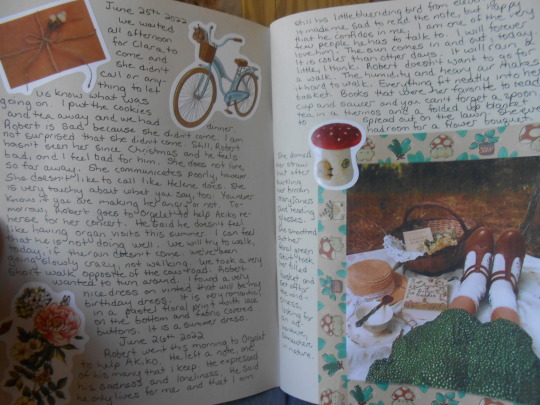


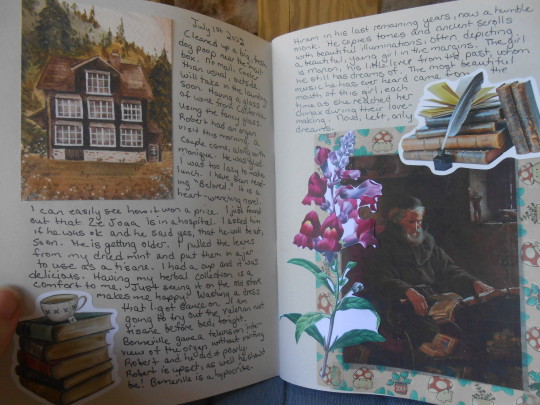




#Journal#writing#journal keeping#mori lifestyle#mori#mori kei#mori girl#cottagecore#cottagecore lifestyle
35 notes
·
View notes
Text
youtube
Watch the American Climate Leadership Awards 2024 now: https://youtu.be/bWiW4Rp8vF0?feature=shared
The American Climate Leadership Awards 2024 broadcast recording is now available on ecoAmerica's YouTube channel for viewers to be inspired by active climate leaders. Watch to find out which finalist received the $50,000 grand prize! Hosted by Vanessa Hauc and featuring Bill McKibben and Katharine Hayhoe!
#ACLA24#ACLA24Leaders#youtube#youtube video#climate leaders#climate solutions#climate action#climate and environment#climate#climate change#climate and health#climate blog#climate justice#climate news#weather and climate#environmental news#environment#environmental awareness#environment and health#environmental#environmental issues#environmental justice#environment protection#environmental health#Youtube
6K notes
·
View notes
Text

🐝
(photo by me)
#mori#mori girl#mori girl life#appalachian yama mori#mori lifestyle#mori kei#forest girl#honeybee#bee butt#mountains#dusk#nature#twilight#flowers#appalachia#blue ridge mountains#the most precious of patoots#personal
14 notes
·
View notes
Text

Gnomevember 2022, thirteen (with Sunday Gnomedays!!)
(….well technically the whole month is one big Sunday Gnomedays post. But still.)
Thinking about Story (Tales, the theme, that is) in terms of what we tell ourselves about a thing, or a space, etc. Which brought to mind this quote from “Mori Girls, Children of the Forest” (an article in “The Faerie Handbook”):
“The Mori Girl may in truth actually live in the middle of a busy city, and never have a chance to visit the countryside….. If however, in her deepest heart of hearts, the above descriptions [the idea of the forest lifestyle] sound like what she truly wants to be, then she is indeed a Mori Girl. And perhaps so are you.”
(Information on Mori Kei style here. Mori Kei being the more gender-neutral term, adopted in 2012!)
All of that to say, that got me thinking of imagery as a kind of spellcasting, again. What do we tell ourselves about what a thing means, or represents? What hope does that give us? What Story do we keep telling over and over and over, in the use of – or approach to – something, with that in mind?
That is energy. That is magic. For good, or for ill.
So, a Gnome of the city folk of “Tock the Gnome,” who would very likely never have set foot on the surface, forest or otherwise. And an acorn, and the idea of what that might mean, and hold.
…..Which leads me to “The creation of a thousand forests is in one acorn.” – Ralph Waldo Emerson, but this has already gotten quite diatribey (affectionate) so I am gonna stop there.
More on the Gnomes of “Tock the Gnome” here 🍄💕
~
💗 Bonus art and stories ~ Shop and Commissions 💗
#gnomevember#gnomecore#gnome#gnome woman#faerie#sunday gnomedays#drawing challenge#tock the gnome#bonus art#ooh shiny#mori kei
9 notes
·
View notes
Text
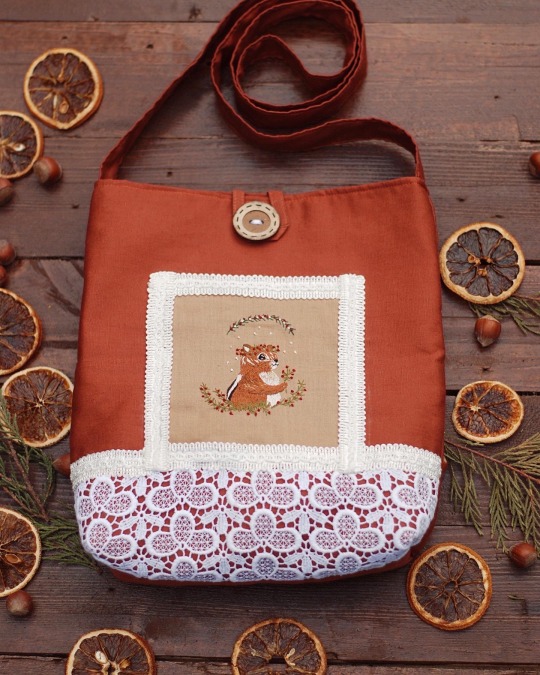

#cottagecore#boho bag#hand embroidered bag#cottage aesthetic#love#animal#cool#fashion#handmade bag#handmade#folk#folklife#folklore#luxury gifts#romantic#giftideas#cottagecore lifestyle#bohemian bag#cottage chic#mori kei bag#mori kei#cottagecore bag#yama kei bag#woodland hand crafted bag#woodland pouch
2 notes
·
View notes
Text
Wine Production Machinery Market Is Estimated To Witness High Growth Owing To Increasing Demand For Automated And Efficient Machinery
Market Overview:
The wine production machinery market includes machinery and equipment used in the production process of wine. These machines provide various advantages such as increased efficiency, reduced labor costs, improved quality control, and increased production capacity. The need for wine production machinery is driven by the growing demand for wine, especially in emerging economies, where urbanization and changing lifestyles have led to an increase in wine consumption. Additionally, with advancements in technology, the wine production machinery market is witnessing a shift towards automated machinery to streamline the production process and ensure consistency in quality.
The global Wine Production Machinery Market Size is estimated to be valued at US$ 2.35 billion in 2023 and is expected to exhibit a CAGR of 6.6% over the forecast period 2023-2030, as highlighted in a new report published by Coherent Market Insights.
Market Key Trends:
One key trend in the wine production machinery market is the increasing adoption of automated machinery. Automated machinery offers several benefits such as increased efficiency, reduced labor costs, improved quality control, and increased production capacity. With the growing demand for wine and the need for consistent quality, wineries are investing in automated machinery to streamline their production process. These machines automate various stages of wine production, including crushing and destemming, fermentation, clarifying and filtering, and bottling. Automated machinery not only improves the efficiency of the production process but also ensures consistency in the quality of wine produced.
Key Players in the market:
- Bucher Vaslin
- Pera Pellenc
- Scharfenberger
- Zambelli Enotech
- ENOTOOLS
- Criveller Group
- Della Toffola
- Gruppo Bertolaso
- Fabbri
- Mori Luigi & C.
PEST Analysis:
Political: The political factors influencing the wine production machinery market include government regulations and policies regarding wine production, import-export laws, and taxation on wine industry. Political stability in wine-producing countries also plays a significant role in the market growth.
Economic: Economic factors like GDP growth, disposable income, and consumer spending patterns influence the demand for wine production machinery. Economic downturns may lead to a decrease in expenditure on wine production equipment, while a growing economy can boost investments in the market.
Social: Changing consumer preferences towards wine consumption, increasing awareness about wine quality, and the growing trend of winemaking at home are the social factors affecting the market. Demographic factors like population size, age distribution, and social-cultural trends also play a role in shaping the demand for wine production machinery.
Technological: Technological advancements in wine production machinery, such as automation and digitalization, significantly impact the market. Innovations that improve wine quality, production efficiency, and reduce costs are key drivers for the adoption of new machinery in the wine industry.
Key Takeaways:
The global wine production machinery market is expected to witness high growth, exhibiting a CAGR of 6.6% over the forecast period from 2023 to 2030. This growth can be attributed to increasing wine consumption worldwide, the rising demand for premium wines, and technological advancements in production processes.
In terms of regional analysis, Europe is expected to be the fastest-growing and dominating region in the wine production machinery market. Europe has a rich history of wine production and is known for its high-quality wines, driving the demand for advanced machinery. Additionally, the presence of major wine-producing countries like France, Italy, and Spain further boosts the market in this region.
Key players operating in the wine production machinery market include Bucher Vaslin, Pera Pellenc, Scharfenberger, Zambelli Enotech, ENOTOOLS, Criveller Group, Della Toffola, Gruppo Bertolaso, Fabbri, and Mori Luigi & C. These key players have established themselves in the market by offering a wide range of machinery with advanced features, catering to the diverse needs of wine producers worldwide. They focus on continuous research and development to enhance their product portfolio and stay competitive in the market.
#Wine Production Machinery Market#Wine Production Machinery Market Size#Coherent Market Insights#Wine Production Machinery Market Demand#Wine Production Machinery Market Growth#Wine Production Machinery Market Trends#Wine Production Machinery Market Analysis#Wine Production Machinery Market Forcast#Wine Production Machinery Market Share
0 notes